The Seaweed Surfboard
Written By: Linzi Hawkin
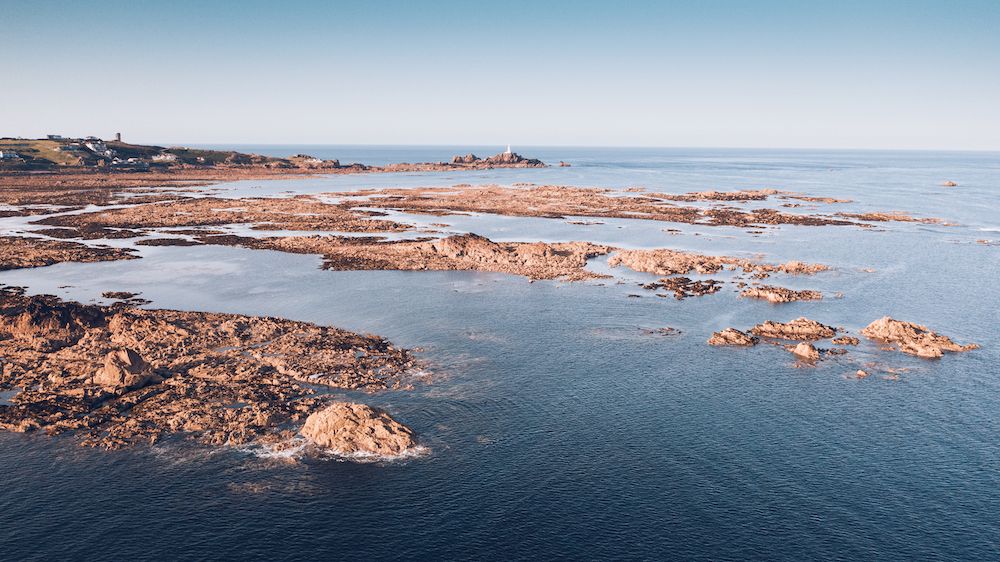
The Seaweed Surfboard project came about by way of a catch up call with good friend & long time collab partner Michael Stewart. We’ve worked together for years – but always on projects overseas – planting mangroves in Myanmar, working with coastal communities in Indonesia, creating blue experiences for UN Ocean Conference folk in Portugal and a whole host of other things in between. But this conversation was about my home – Jersey. A small island in between England & France, nine miles by five and a pretty awesome place to live.
We were catching up on work stuff when Michael asked – Hey, have you heard of this local guy called Charlie who’s doing rad things with seaweed? I had – He’d won the Vissla Upcycle Contest in 2020 with an awesome board made from sea lettuce – an invasive species of seaweed disrupting the local ecosystem.
Michael was keen to learn more about his experiments so we reached out to him to see if he’d be up for a collab project.
Here’s where the synchronicity starts to kick in – It just so happens that on our little island, we’re also lucky enough to have a Gold Level Ecoboard builder, Ryan Herve, just down the road from us. Ryan and I grew up together and few years back he connected with the Sustainable Surf team. He has been shaping incredible Gold Level Ecoboards ever since.
So we caught up with Charlie – turns out he was busy in his garden shed building surfboard blanks out of dried seaweed he’d collected from his local beach. The next iteration of his award winning sea lettuce board.
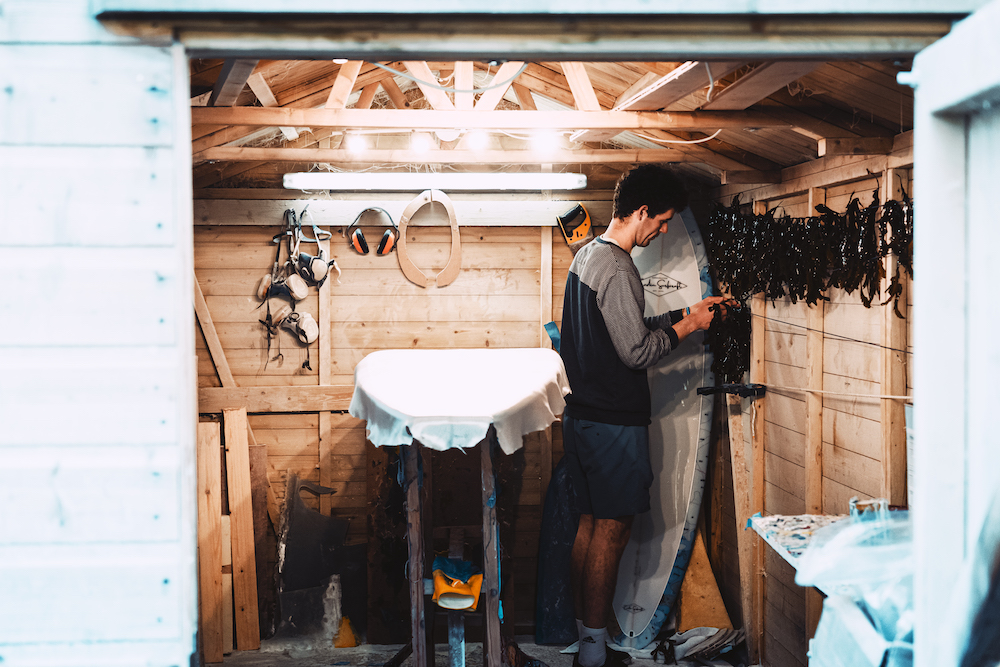
I remember the first time I saw footage of Charlies process – watching him hang the seaweed in his tiny shed, then dry it out in his folks oven, crush it, and then, adding a few magic ingredients into the mix, pouring this super strange mixture into his homemade mold.
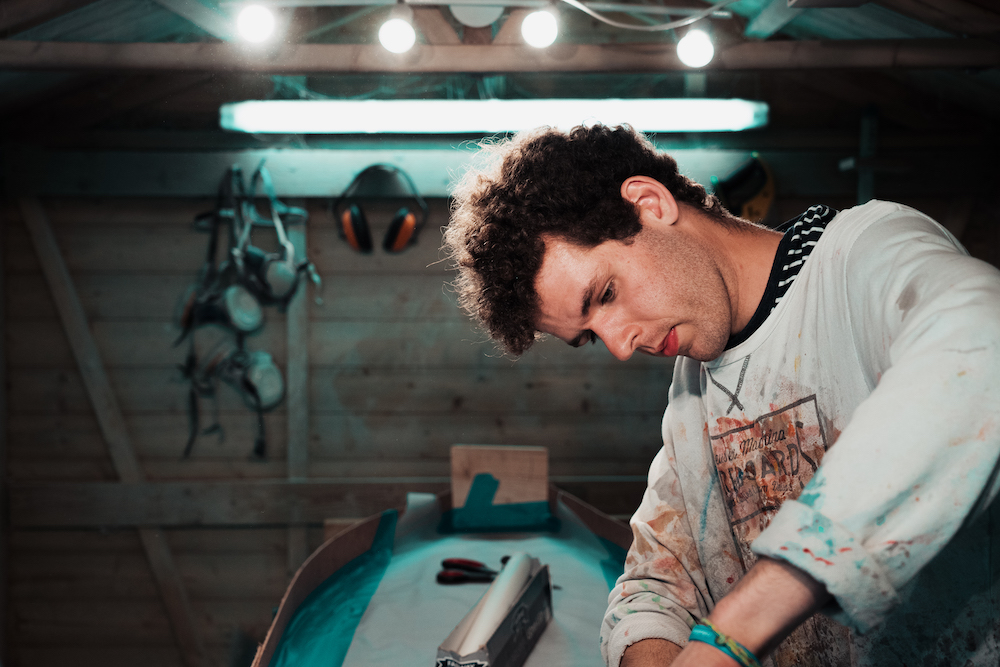
To be honest, I was pretty skeptical – it seemed impossible that this small bucket of crushed up seaweed could expand into a full blank. But the next morning as we watched Charlie undo the straps on the mold we were blown away – not only had the blank expanded overnight, it was busting out of the mold and making all sorts of crackling sounds. Crazy.
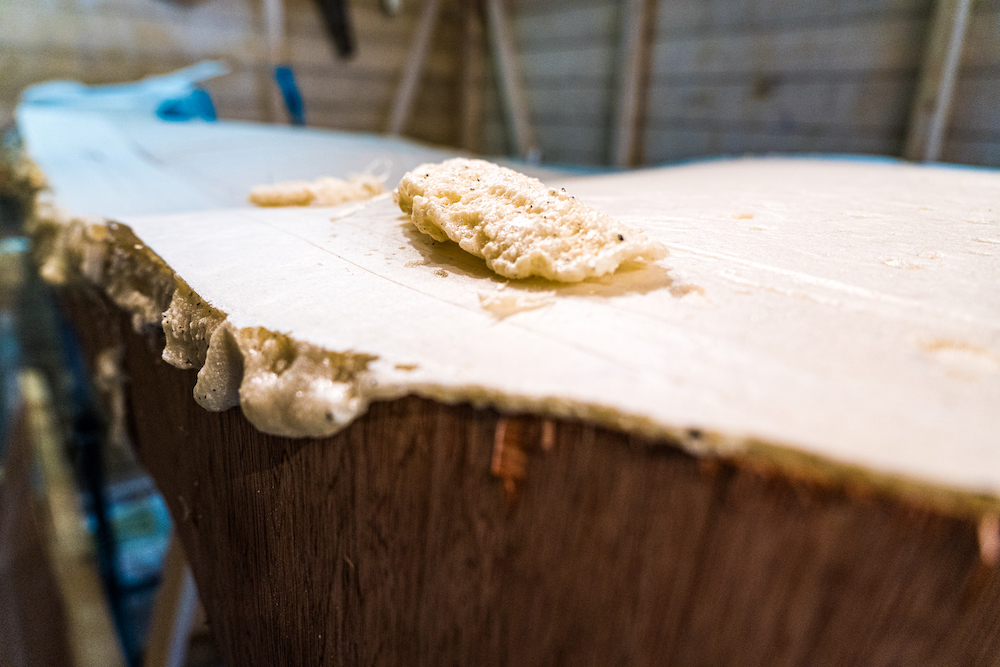
He took the blank up to Ryans factory and the next phase of experiments began – it felt like such a privilege to watch the two of them totally geek out on it all. Comparing foams, starting to figure out what board they’d shape – and generally get super excited at the possibility of building a seriously good board from seaweed.

As I kept Michael up to date with the progress – we quickly realized this had shifted from a board that we imagined would be a novelty, to something that actually looked like a viable alternative material for surfboard blanks.
As the summer kicked in we spent more and more time at the factory – with a couple of bonus early morning missions out to the reef to swim amongst the seaweed and capture some footage for the film.
The board was laminated with basalt & flax fiber and glassed with bio-epoxy resin to reduce its environmental impact & carbon footprint.
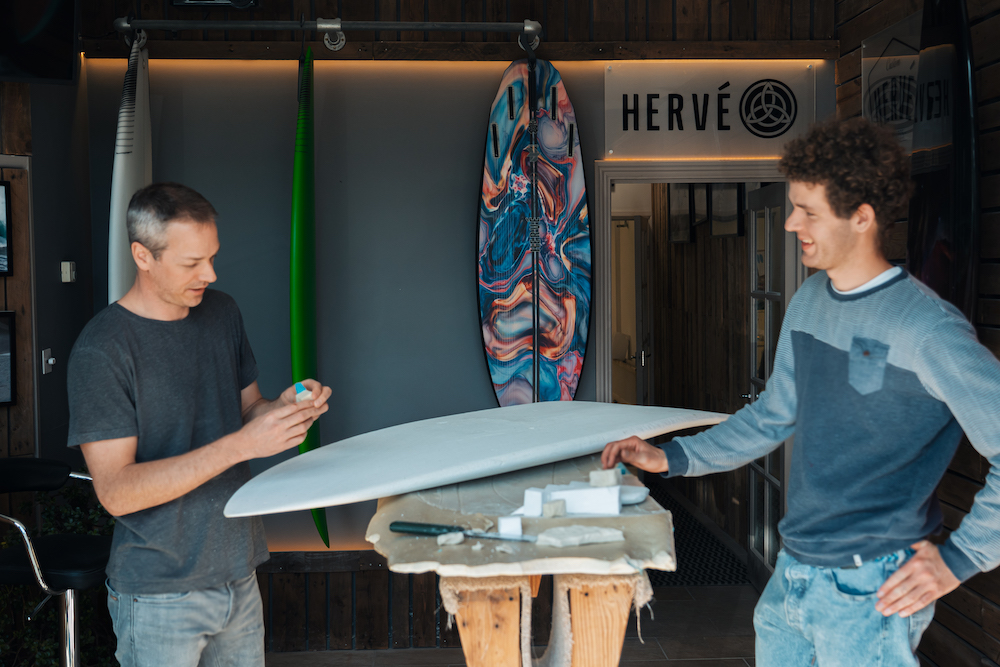
Days later we’re at the beach, waxing up the board and getting ready to finally jump in the water to test out the board. It was a pretty typical Jersey summer day – small swell but a few fun waves around, light winds & sun shining.
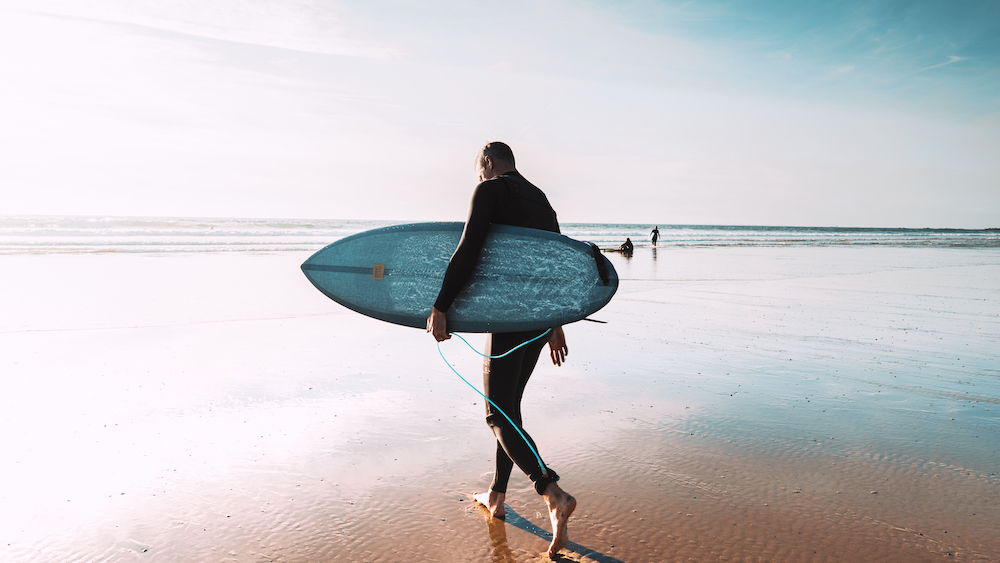
Both Charlie & Ryan were stoked on how the board surfed – responsive and super fun – and that day was just the beginning. The first of many waves ridden on the seaweed surfboard.
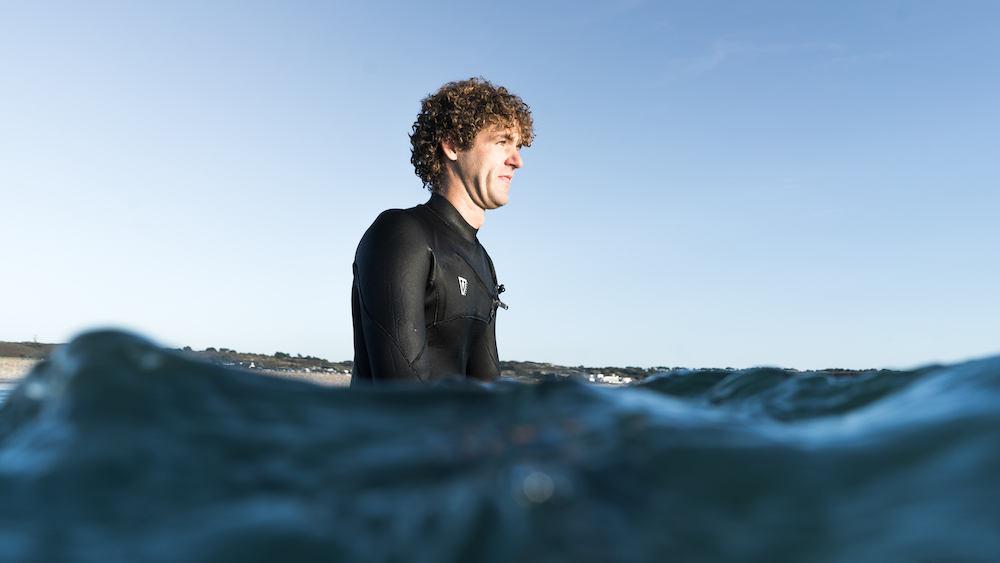
I think the real magic in this story lies in the collaboration, the willingness to explore new ideas, screw up and try again. Most importantly, I think it is important to recognize that sometimes the very best ideas, and humans, are right in your own backward.
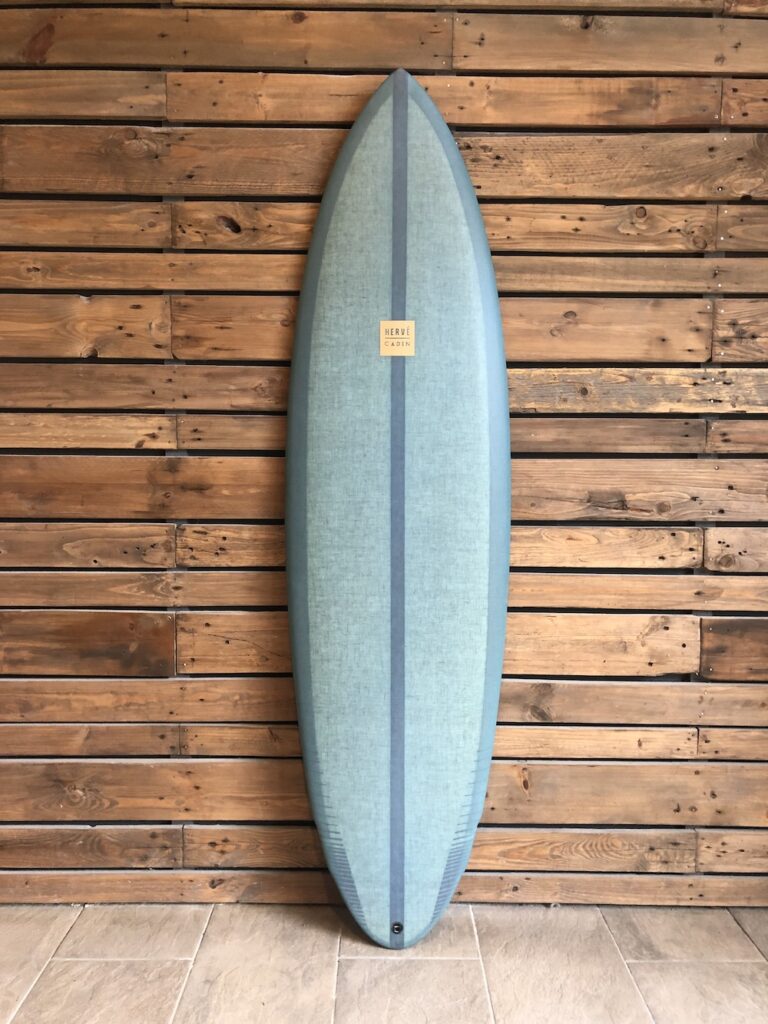
Interviews
Charlie Cadin – Cadin Surfboards
How long have you been shaping ? Did it all kick off in your garden shed ?
I started making little hand planes for bodysurfing from when I was about 10-11 from old chopping boards and bits of wood lying around, then slowly got bigger into bodyboards, and then finally surfboards. I started shaping proper fiberglassed surfboards about four years ago, and have been hooked ever since. Its a steep learning curve but I enjoy the process of getting there.
Can you share a bit more about where the idea came from to start experimenting with seaweed ?
After shaping a few of my own boards from polyurethane and polystyrene (PU and EPS) I was aware of how much waste goes into each board, through foam dust and glass scraps. Jersey has a significant problem with and invasive species of seaweed called Sea Lettuce in summer, and from there I started experimenting with small samples to see if it was viable as a material on a small scale then built up from there.
What was the most surprising part of the project ?
The reaction the boards have had has been really cool. It literally only started with posting a short clip on instagram, and I was lucky enough to win the Visual Creators contest, and have interest in the project from some pretty cool people that I look up to. I am keen to see where it goes next, and the support so far has been pretty incredible.
What % of the board is made from organic materials ?
For the seaweed foam blank, by weight the blank is 75% bio based materials, with 55/60% percent of that being seaweed. The other 25% is non bio based things, chemicals including polyurethane but not just. The blank was then glassed using bio based epoxy resin and a flax-basalt fibre cloth. Since then the board has shown a fair few pressure dings on the deck from feet positioning, so in the future the glassing schedule will probably have to be altered.
Who or what is inspiring you right now in terms of sustainability ?
With regards to the surfing industry, Donald Brink inspired me when I was younger to use old scrap materials to make something functional, and aim to be like his crafts which are works of art. From making 50s inspired wooden surfboards to fish boards out of pallets, it all heavily influenced my process today. On a local level, Ryan Herve definitely inspired me through making ultra high performance boards using alternative constructions and bio based resins and cloths, whilst still functioning incredibly in the the water.
What’s next for you ? Any more experiments planned ?
I am currently in my final year of university studying Marine Engineering, and am undergoing a research dissertation project into bio based composites and a comparison between them and synthetic, chemical based composites. It’ll be interesting to see the results, especially on the longterm with regards to durability and longevity as that is the main assumed con of bio based composites.
Ryan Hervé – Hervé Surfboards
What caused you to shift to a more sustainable way of making surfboards ? Was there a particular moment or was it a gradual thing ?
I’ve been building boards full-time for almost 25 years, and I got to a point where I was really fed up with the environment I was working in. I had put up with enough dust in my eyes and fumes to put me off ever working in a surfboard factory again. I remember when I first heard of epoxy bio-resin, I had to get hold of some immediately to try it out. I’ve always said, “the only way surfing can go is through new materials”. New materials and improvements to materials are what interest me. I’m looking for ways to make boards feel more natural by using more natural materials; it can really enhance the moment of being connected to nature while out surfing.
How would you describe your relationship to the ocean ? How does it impact your day to day life ?
It’s my point of zero, my place to reset.
What advice would you give someone who has just started shaping ?
A good board starts with a good design; take your time, learn from your mistakes, and do your own thing; it’s fun… Always wear a mask!
What was the most surprising part of the Seaweed Surfboard project for you ?
I was most surprised when I saw the first batch of seaweed foam Charlie brought to the factory; it was then that I realized the potential this had.
Can you describe how the board surfed ? You got to surf it in some pretty decent autumn waves last year – how was it ?
The board felt great; I was happy with how it felt on the water and how the design surfed. I took it out on some decent waves, and it felt solid. I’ve made several other versions of that design over the last 18 months, making improvements along the way; it’s the only board I’ve been riding in that time. I’ve now named this model the “Dash” after a poem by Linda Ellis.
What does the next chapter of Herve Surfboards look like ?
Creative!